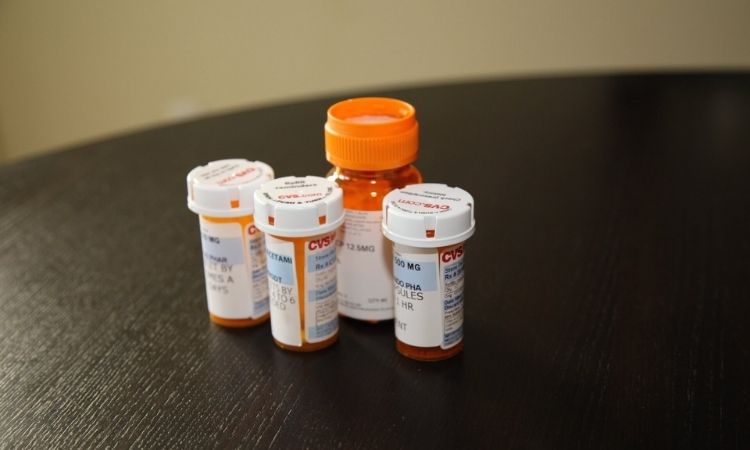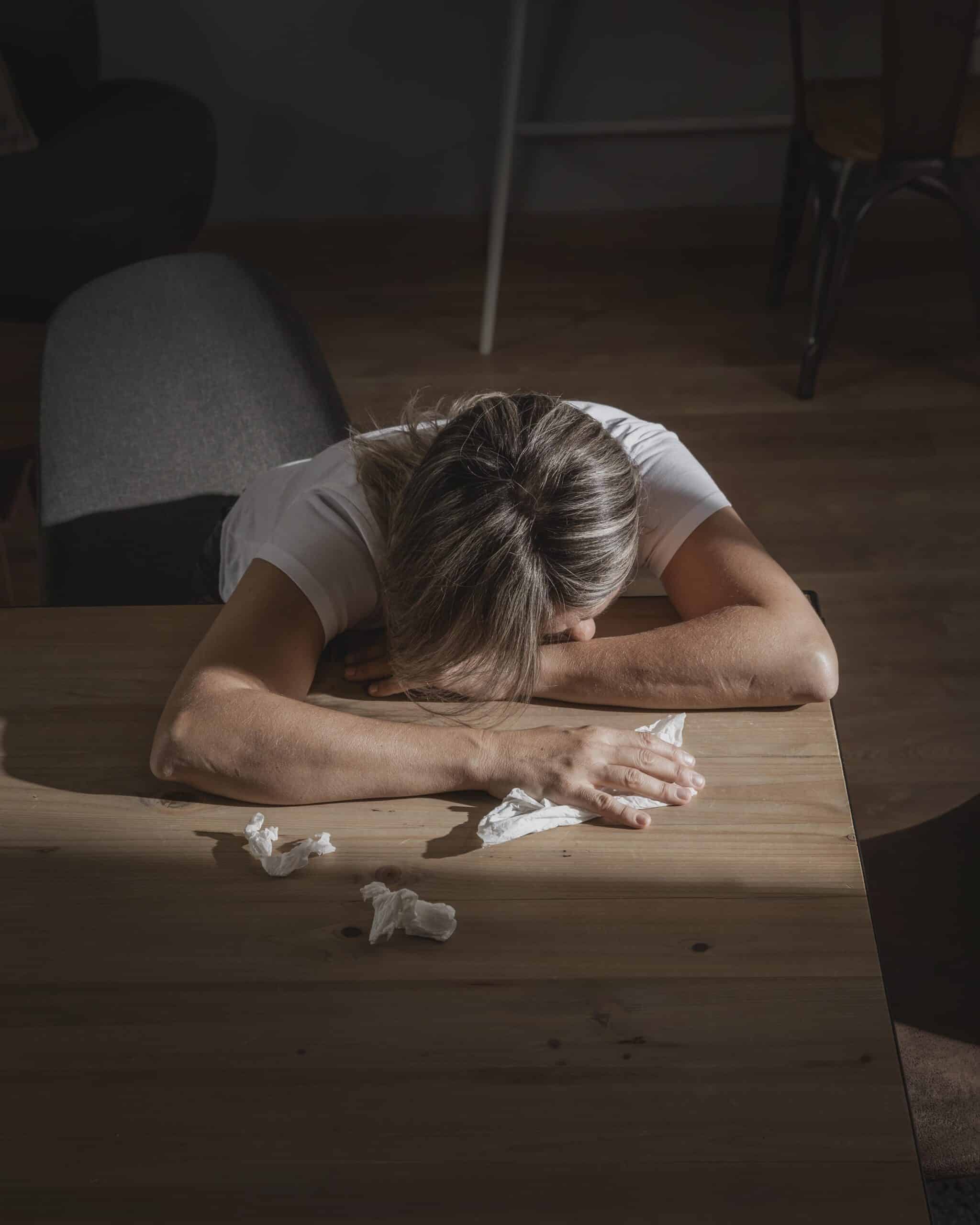Opioid Addiction
Opioid addiction is a serious condition that disrupts the brain’s ability to manage pain and pleasure, leading to dependence after just a short time. It can cause significant physical, mental, and emotional damage, affecting all areas of life. But opioid addiction doesn’t have to control your future. Learn more about opioid addiction, treatment options at Blue Hills Recovery, and how to start your journey toward recovery today.
Overview of Opioid Addiction
Opioid abuse is a chronic condition where someone is unable to stop using opioids, even when it negatively impacts their health and well-being.
This addiction often starts with the use of prescription opioids for pain relief or recreational use of illegal opioids like heroin. Over time, the brain adapts to the drug’s effects, leading to increased tolerance and physical dependence.
You may be aware that opioid drug use is a major public health concern. That’s because anyone can be affected by opioid addiction, regardless of age, background, or social status.
Left untreated, it can disrupt relationships, work, and mental health, making recovery extremely difficult without professional intervention.
However, there is hope for people facing opioid use disorders. With dedication to an effective rehab program, like those we offer at Blue Hills, you can quit use of opioids and start your recovery.


Why Do People Form Opioid Addictions?
Opioid addiction doesn’t happen overnight, and it’s certainly not a choice. Opioid addiction often begins when you take opioids for pain relief or recreational use, and experience an intense sense of euphoria. This initial pleasure can lead some people to misuse opioids, taking higher doses or using them more frequently to recreate the high. Over time, opioid use changes your brain’s chemistry, creating a need for larger amounts of the drug to feel the same effects. Addiction develops when you eventually become unable to control use, despite the negative consequences on your health and relationships. Anyone can develop an opioid addiction, but the risk increases with misuse and prolonged use.
What Causes Opioid Addiction?
When you take opioids, they attach to specific receptors in your brain and nervous system, causing a release of endorphins. These chemicals reduce your perception of pain and produce a sense of pleasure or euphoria. This flood of endorphins can temporarily make you feel very good, but as your brain adjusts, it begins to rely on the drug to feel normal. Over time, your brain stops producing as many natural endorphins, which leads to tolerance. This means you need to take more opioids to feel the same effects. As you continue using opioids, your brain’s reward system changes, making it difficult to experience pleasure without the drug. Addiction develops when your brain becomes dependent on opioids, driving a compulsive need to use them. You may find yourself taking opioids not only to relieve pain but to avoid withdrawal symptoms like anxiety, nausea, and muscle pain. This cycle of needing more of the drug to feel good or avoid discomfort is what makes opioid addiction so difficult to break.
Risk Factors for Opioid Addiction
While anyone can develop an opioid addiction, certain factors increase the likelihood. Several factors contribute to a higher risk of opioid addiction, including:
- Personal or family history of substance abuse: Those with a history of drug or alcohol misuse are more vulnerable to opioid addiction.
- Mental health disorders: Conditions like depression, anxiety, or PTSD can make a person more susceptible to opioid misuse.
- Environmental influences: Growing up around substance use disorder, trauma, or economic hardship increases the risk.
- Chronic pain: Long-term use of prescription opioids for pain management can lead to addiction, especially if opioids are used for extended periods.
- Younger age: Adolescents and young adults are at higher risk due to the side effects of opioids on the developing brain.
People who misuse opioids — by taking higher doses or using them in ways not prescribed, such as snorting or injecting — face a greater risk of addiction and drug overdose.
Women may also face unique risks, as they are more likely to be prescribed opioids for chronic pain and often receive higher doses or longer treatments than men.


Who Is Affected by Opioid Addiction?
Anyone can develop an opioid addiction, regardless of their age or background. However, certain demographics are more affected than others.
Opioid addiction statistics reveal these trends:
- Age: Adults aged 25-54 have seen steady increases in opioid overdose deaths. Black adults aged 45-54 have been particularly impacted, with deaths nearly doubling.
- Race: Black communities have seen opioid overdose rates four to six times higher than those of White ones, especially with the rise of synthetic opioids like fentanyl.
- Gender: Women are more likely to be prescribed opioids for chronic pain, often at higher doses and for longer periods, increasing their risk of addiction.
Misuse likelihood: Younger adults (18-25) are more likely to misuse prescription opioids, leading to higher addiction rates.
Signs of Opioid Addiction
Opioid addiction often starts subtly but progresses over time, with key physical and behavioral changes emerging.
Physical signs of an opioid addiction look like:
- Small pupils
- Drowsiness or nodding off
- Slow breathing or trouble staying awake
- Weight changes (loss or gain)
- Flu-like symptoms (nausea, vomiting, sweating)
- Wearing long sleeves to hide arms
Behavioral signs of an opioid addiction include:
- Sudden changes in attitude, mood, or personality
- Withdrawing from family members, friends, and social activities
- Declining performance at work or school
- Secretive behavior, isolation, or a tendency to steal
As opioid addiction progresses, more severe and visible signs may appear. These signs often indicate that the addiction has reached a critical stage and may involve drug misuse beyond prescription opioids.
Advanced warning signs include:
- Missing medications or finding burnt spoons
- Presence of syringes or small bags with powder residue
- Missing shoelaces or belts used to tie off injection sites
If you or a loved one is displaying any of these signs, it’s not too late to seek help. No matter how established the addiction is, recovery is possible with the right support.B
Types of Opioid Addiction
Opioid addiction can be broadly divided into two categories: addiction to prescription opioids and addiction to non-prescription (illicit) opioids. Both forms of addiction carry serious risks, including overdose and long-term health issues.
Prescription Opioid Addiction
Non Prescription Opioid Addiction

What Happens When Opioid Addiction Is Left Untreated?
When opioid addiction is left untreated, the brain stays wired for dependence. This makes it increasingly difficult to stop, and harder to feel pleasure without the drug.
Here are some of the long-term effects of heroin abuse:
- Cravings become overwhelming, leading to continued heroin use despite harmful consequences.
- Severe withdrawal symptoms, including sweating, shaking, and intense cravings when not using opioids.
- Weight loss, frequent flu-like symptoms, and poor hygiene, as the body deteriorates.
- Mental and emotional effects, including depression, anxiety, and social isolation.
- Breakdown of relationships with family and friends break down.
- Effects on your lifestyle, such as work or school performance.
- Financial difficulties, as addiction takes priority over everything else.
- Overdose risk and death, especially as addiction goes on.
The longer opioid addiction goes untreated, the higher the risk of overdose and death. Without intervention, addiction can lead to permanent health issues, increased risk of accidents, and a cycle that is extremely hard to break without professional help.
Opioid Addiction Treatment in Massachusetts
Blue Hills Recovery in Massachusetts offers a variety of opioid treatment programs designed to help people who are struggling with opioid addiction. These programs provide comprehensive care to help you detox, recover, and rebuild your life.
Opioid Detox Programs
Opioid Addiction Rehab Programs
Opioid Day Treatment/Evening Treatment
Opioid Mental Health Care

Overcome Opioid Addiction at Blue Hills Recovery
If you or someone you love is battling opioid addiction, you don’t have to face it alone. At Blue Hills Recovery, we understand how difficult this journey can be, and we’re here to guide you every step of the way.
Our compassionate team of health care providers offers care that addresses both the physical pain and emotional toll of addiction. With personalized treatment plans, expert support, and a caring environment, Blue Hills Recovery offers you the chance to heal and rebuild your life.
We believe that recovery is possible for everyone, and with the right help, you can overcome your use of opioids and find hope again.
Reach out to Blue Hills Recovery today to learn more about our opioid addiction treatment programs and take the first step toward a healthier, brighter future.
Opioid Addiction FAQs
How is opioid addiction treated?
What does opioid addiction look like?
Can you cure an opioid addiction?
Which prescription opioids lead to addiction?
How can you help someone with an opioid addiction?
Sources
Let’s talk about how we can help.
A Life of Healing Can be Yours.
You deserve to become your best self. With decades of combined experience in the field of addiction medicine, our staff knows what it takes to build a foundation for recovery.